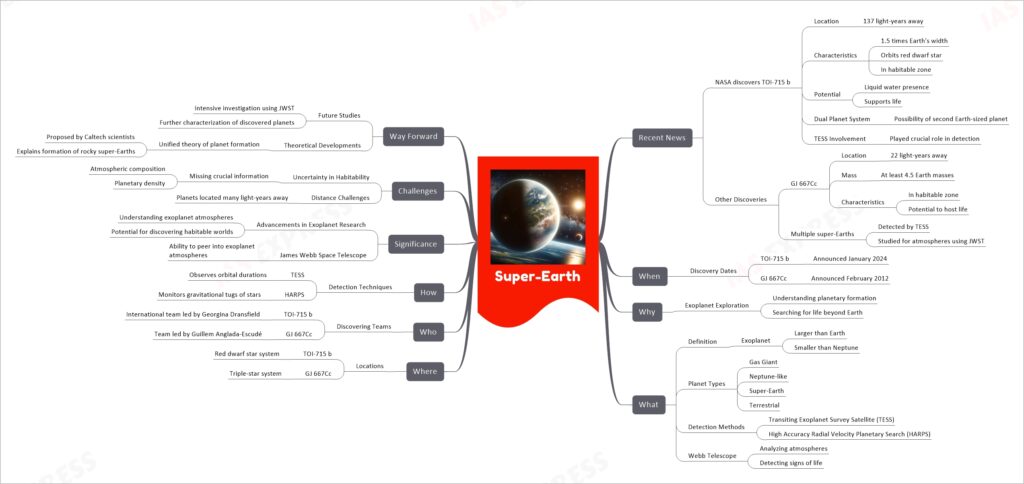Super-Earth

Super-Earths are a category of exoplanets larger than Earth but smaller than Neptune, with recent discoveries including TOI-715 b and GJ 667Cc. These planets are particularly interesting due to their potential habitability, with characteristics like being in the habitable zone of their star systems and possibly hosting liquid water. Their discovery and study, conducted by international teams using telescopes like TESS and HARPS, contribute significantly to our understanding of exoplanet atmospheres and the conditions for life beyond Earth. Future investigations, especially using the James Webb Space Telescope, are expected to provide more insights into these intriguing celestial bodies.
If you like this post, please share your feedback in the comments section below so that we will upload more posts like this.

